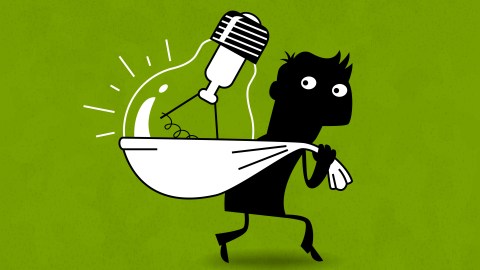The Service That Wants to Change the Internet by Revolutionizing Digital Rights

Today, most of content creation occurs in the digital space. Millions of pictures, videos, songs, Vines, texts, graphics, ideas are created daily, but most of their creators have little control over how they’re used, can’t license them easily, and can’t even guarantee whether they will be given proper attribution in the future. Bruce Pon, the CEO and co-founder of ascribe believes that creators should be at the center of the digital economy and that consumers, if provided with an easy and convenient way, will choose the option to reward the creators rather than pirate their work.
According to Pon, copyright is currently in shambles and the mechanisms for people to easily license their work is full of barriers.
“Copyright is frustratingly localized, yet we live in a digital world where ideas are global and spread at the speed of light,” Pon says. “Ideas can be perfectly copied and instantaneously transmitted — and copyright hasn’t kept up. … Digital destroys scarcity, exclusivity and provenance — because copies are perfect, free and instantaneous to distribute. Digital copying makes the chain of ownership for art ambiguous and questionable.”
To solve this problem, Pon has embarked on a mission to create a new “ownership layer” for the Internet that gives creators more options — makes it easy for them to share their work and keep the attribution; license it and signal how they want it to be used; and track it and see how it is shared. In other words, he wants to make it possible for creators to manage their intellectual property without intermediaries and transfer it as easily as one can transfer money via PayPal.
Ascribe.io is a third-party, independent ownership registry. According to the site, once a work of art is registered there by a creator or collector, “We time stamp that claim onto a publicly accessible database (the Bitcoin blockchain). Think of the blockchain as a database that anyone can add to, anyone can read, but once it’s written it cannot be deleted. Three things are required to “stamp” ownership: identification of the creator, a unique identifier for the work, and an undisputable time stamp. Ascribe ensures that all three requirements are met.”
The “stamp” that Ascribe provides can be used to prove ownership, and also to transfer rights easily, whether it’s selling or loaning. Sites like Instagram and Flickr could incorporate the API and automatically register their user’s works. Galleries and marketplaces, on the other hand, can use the service to verify the authenticity of a work they want to show or sell. The ownership chain can never be deleted unless the work itself is deleted from the Ascribe database.
“If attribution could be built into the Internet, the entire architecture would be different. Over time, there would be a shift from ad-based sites — such as Google and Facebook — towards systems and models that restore the power to creators. The fights happening right now are between intermediaries like SoundCloud and the music industry, Amazon and the publishing industry, and BitTorrent and the movie industry. Everyone says that they’re fighting for the creator. Middlemen are required because attribution isn’t there,” says Pon.
So far, Ascribe has worked with artists, museums, and galleries. It is in partnership with Creative Commons and has secured seed funding from top investors from Germany, the US and the UK.
“Intellectual property is regenerative and unlimited,” Pon says. “It alone has the power to raise millions out of poverty. Given a computer and a connection to the Internet, people anywhere on Earth can acquire the means of production, become highly skilled and create intellectual property for the 21st century.”
Photo: Shutterstock





